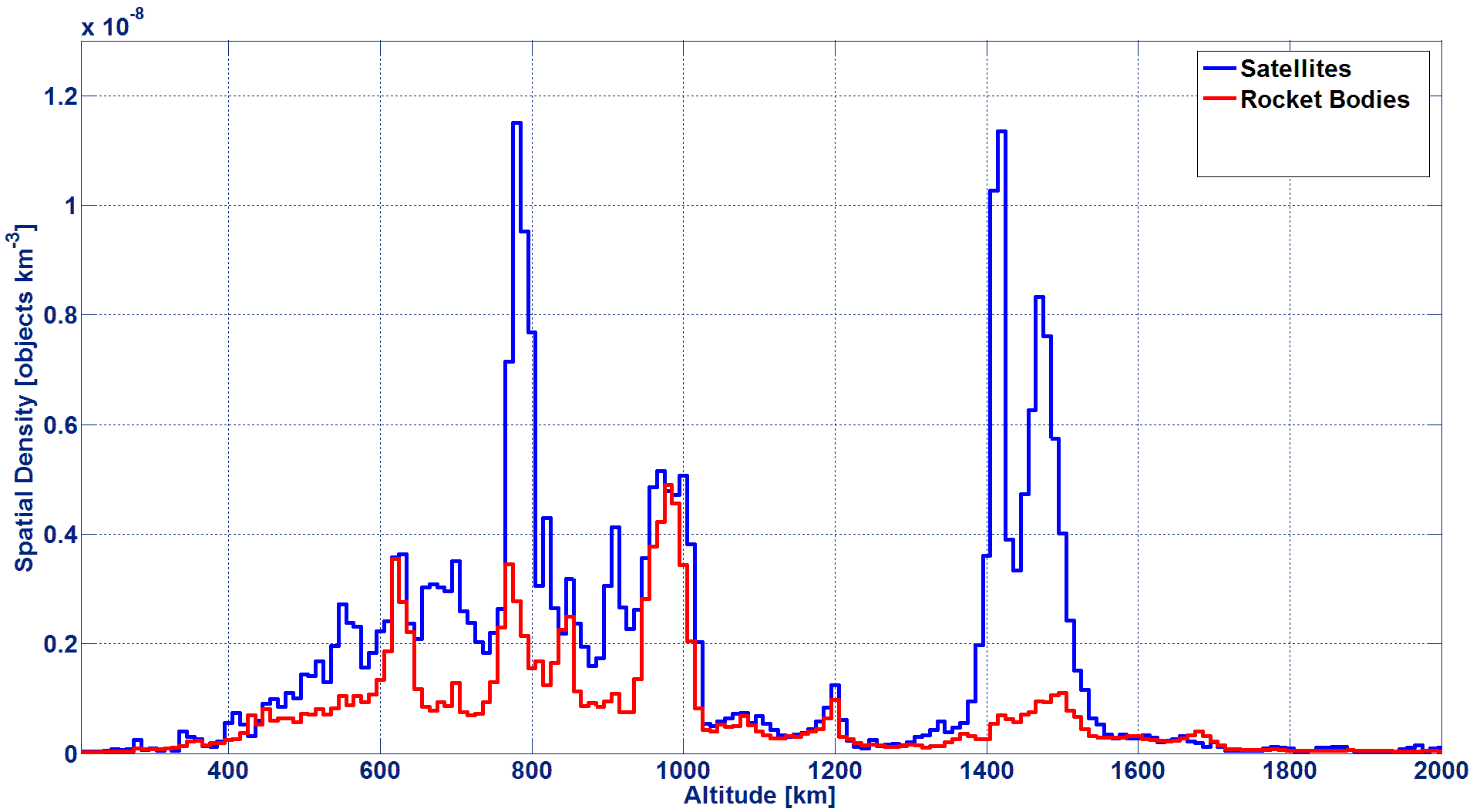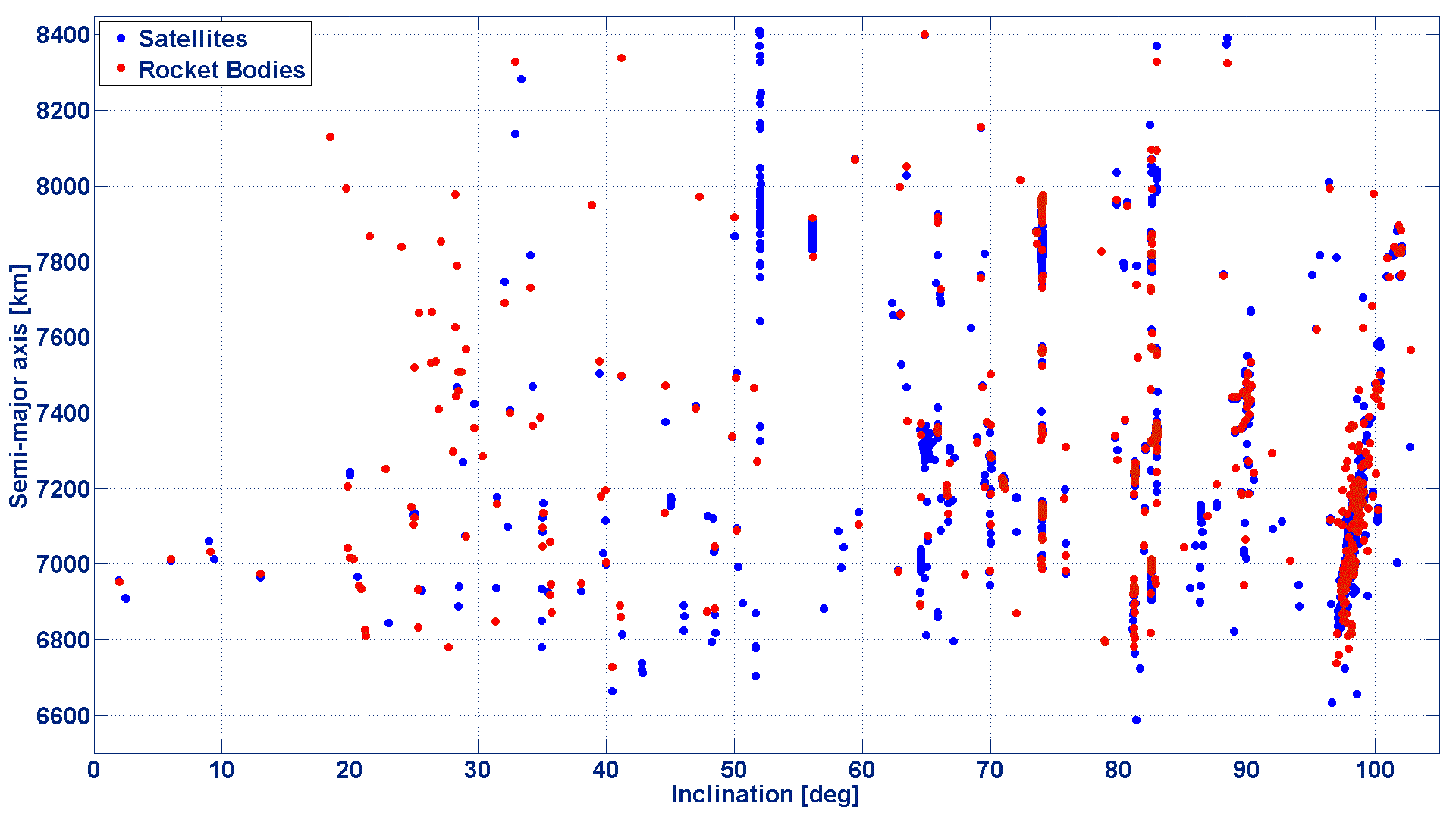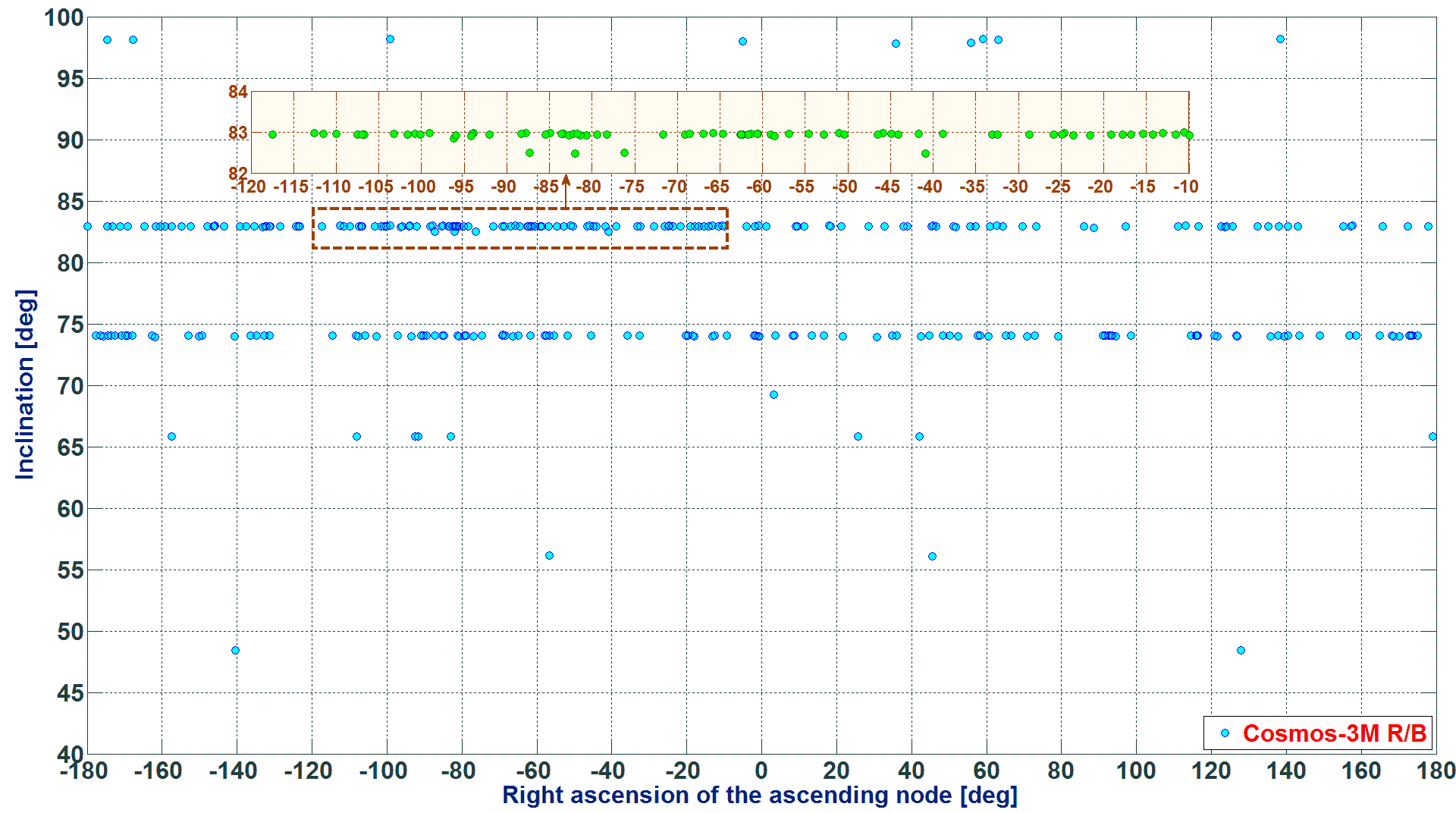During the last 40 years, the mass of the artificial objects in orbit increased quite steadily at the rate of about 145 metric tons annually, leading to a total tally of approximately 7000 metric tons. Now, most of the cross-sectional area and mass (97% below the altitude of 2000 km) is concentrated in about 4500 intact objects, i.e. abandoned spacecraft and rocket bodies, plus a further 1000 operational spacecraft. Simulations and parametric analyses have shown that the most effective way to prevent the long-term exponential growth of the objects larger than 10 cm, i.e. those potentially able to destroy a 1-ton satellite in low Earth orbit, would be to remove enough cross-sectional area and mass from densely populated orbits. In practice, the active yearly removal of approximately 0.1% of the abandoned intact objects would be sufficient to stabilize the cataloged debris in low Earth orbit (i.e, below 2000 km), together with the worldwide adoption of the mitigation measures recommended by the Inter-Agency Space Debris Coordination Committee (IADC) and the United Nations. These include the passivation of satellites and upper stages at the end of their operational life to prevent accidental explosions, the choice of hardware and procedures to minimize the release of mission related objects, the end-of-life removal of newly launched spacecraft from relatively crowded and important orbital regimes, the limitation of the residual orbital lifetime of the new abandoned spacecraft and rocket bodies, and the prevention of catastrophic collisions with conjunction assessments and, if needed, avoidance maneuvers.
During the last quarter of century, the progressive adoption of mitigation measures was quite successful in putting under control the growth of cataloged orbital debris produced by on-orbit accidental fragmentations, but the Chinese Anti-Satellite Test in 2007 and the catastrophic accidental collision between Iridium 33 and Cosmos 2251 in 2009, occurred in the most crowded circumterrestrial region, led to the production of a huge amount of new cataloged fragments, putting the mitigation clock back twenty years. Moreover, the artificial objects with sizes of 10 cm or more, i.e. those "projectiles" able to cause the catastrophic fragmentation of a 1-ton spacecraft or rocket body at the average collision velocity of 10 km/s in low Earth orbit, might continue to grow, in certain altitude ranges, even if drastic measures, such as an immediate and complete halt of launches and on-orbit explosions, were enforced, due to the mutual collisions among the objects already present in space.
For these reasons, it is being recognized that "mitigation", which aims at reducing the generation of new debris associated with on-going or future space missions, should necessarily be complemented by "remediation", which aims at managing the existing debris population through the removal of objects already abandoned in space. The primary targets for removal would have typical masses between 500 and 1000 kg in the case of spacecraft, and of more than 1000 kg in the case of rocket upper stages. In practice, about 5 objects per year should be systematically removed from the 7 most populated altitude-inclination bands below 1000 km.
To reach this goal, a new technical solution has been recently analyzed. It foresees the use of hybrid propulsion modules, in which a gaseous or liquid oxidizer is injected into the combustion chamber along the axial direction to burn a solid fuel. The collaboration, leaded by Politecnico di Milano, includes the University of Naples "Federico II", the University of Padua, Politecnico di Torino, the Centre National d'Études Spatiales (CNES), the Omsk State Technical University and the Samara State Aerospace University, in addition to the Institute of Computer Science and Technologies (ISTI) "Alessandro Faedo" of the Italian National Research Council (CNR), in charge of the characterization of the space debris environment, of the identification and selection of the potential targets for removal, and of some mission analysis aspects. During 2012, the preliminary results of the study have been presented at the 2nd European Workshop on Active Debris Removal (Paris), the 63rd International Astronautical Congress (Naples), the 8th International Science and Technology Conference (Omsk), and the 9th International Conference on Flow Dynamics (Sendai).
Immagini:



